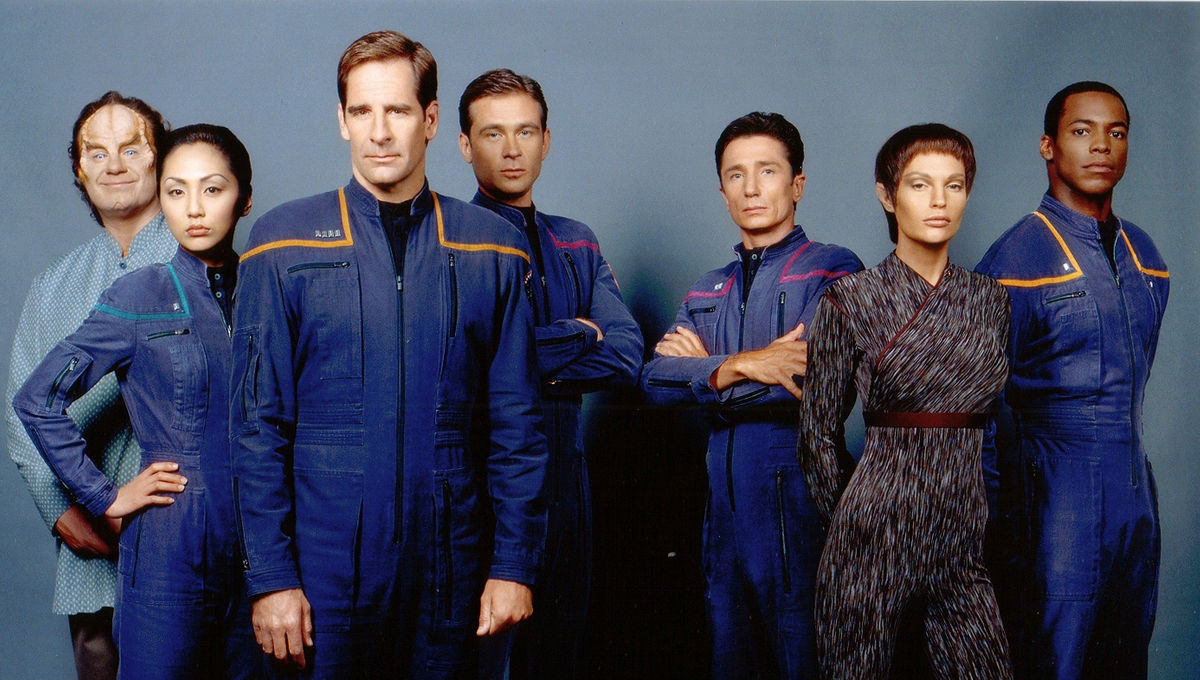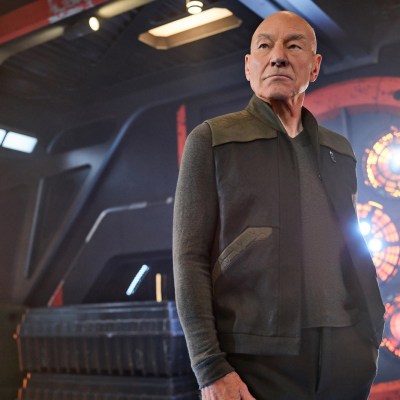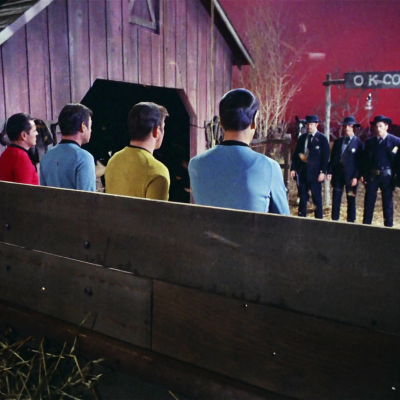One of the things Star Trek became somewhat infamous for in the late 1990s and early 2000s was recycling old plots in new episodes. Voyager and Enterprise both featured several episodes throughout their runs that seemed to be re-runs of earlier stories from The Next Generation, Deep Space Nine or even the Original Series, with a slight tweaking to the setting.
Originality in fiction is often over-rated – Shakespeare didn’t make up his own plots, and simply noting the use of an existing plot or theme is not, in itself, a criticism. However, it is important for a new version of an old story to put its own stamp on that story. Each new version should bring something slightly different to the table and put its own twist on the material.
Read more
Here, then, we’re looking at ten episodes of Enterprise that were “recycled” from earlier Star Trek series and asking whether Enterprise improved on the old formula, or whether the earlier episode was the better outing. We’re focusing on episodes recycled from other branches of the Star Trek franchise for this list, so we won’t mention other examples, like “Shuttlepod One”’s strong resemblance to Red Dwarf’s “Marooned.” Though that one is worth a mention. They’re both really good.
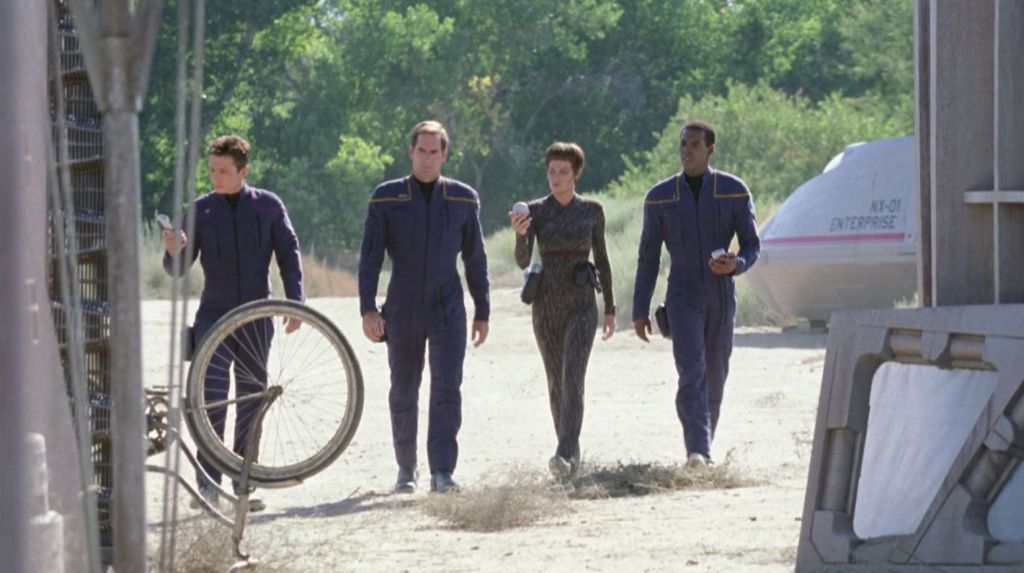
“Terra Nova” (Season 1, Episode 6)
Recycled from: “Friendship One,” Season 7, Episode 21 of Voyager
“Friendship One” was an odd episode of Voyager, as it featured the crew going on a mission set for them by Starfleet, something they didn’t do in earlier seasons because they had no contact with Starfleet for most of the show’s run. As such, it has a very “typical 90s Trek” feel to it, like this could easily have been an episode of The Next Generation or even Deep Space Nine. Or, of course, Enterprise. The fact both episodes take place mostly in the same “caves” standing set on Paramount’s Stage 16 doesn’t help. Both stories feature hostile groups who are suffering radiation poisoning, though in the case of “Friendship One,” it’s the result of aliens using human technology incorrectly (hello, justification for the Prime Suggestion) whereas in “Terra Nova,” the human settlers have been hit by an random asteroid strike.
Who did it better? The Voyager episode has the more philosophically interesting set-up and is notable for bringing back Lt Carey after five years only to kill him off, but “Terra Nova” fits in much better with the “scary space dangers” themes of Enterprise’s first season than Voyager’s random guilt trip thrown in right at the end of the show’s run. “Friendship One” is also, let’s face it, really rather dull. “Terra Nova” isn’t the best Enterprise has to offer, but it just about has the edge here.
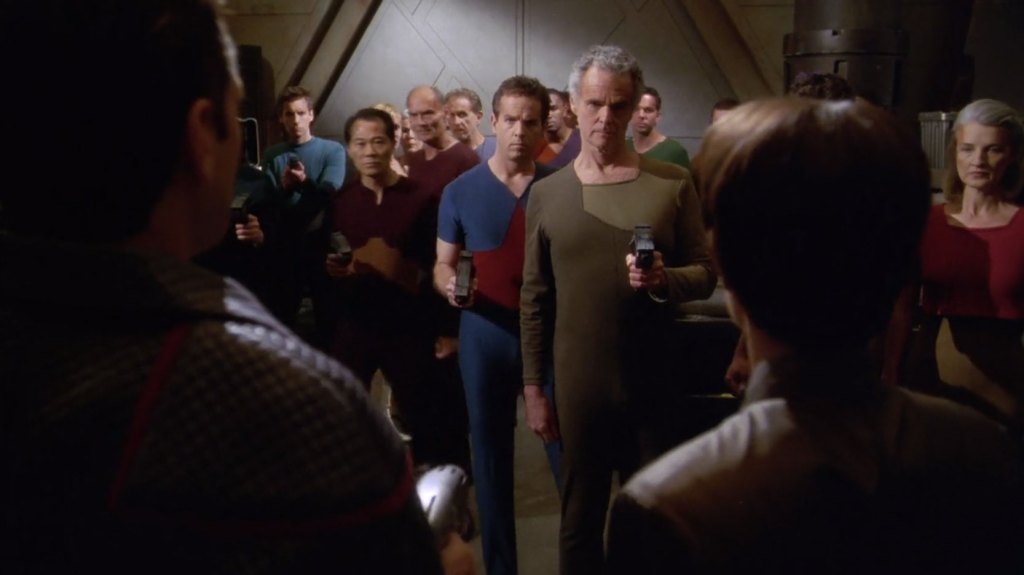
“Oasis” (Season 1, Episode 20)
Recycled from: “Shadowplay,” Season 2 Episode 16 of Deep Space Nine
This one is probably the most egregious example on this list, because both episodes star René Auberjonois. Auberjonois guest stars as the chief engineer of a “haunted” ship in the Enterprise episode, but the story repeats elements, including the final twist, of a Deep Space Nine episode that heavily featured his own character, Odo. In both cases, an entire group of people turn out to be holograms of the dead, created by a middle aged white man wanting to recreate his lost loved ones. We love to see the late and much-missed Auberjonois in anything, but this was a strange episode to have him guest star in.
Who did it better? Although it’s tempting to complain about the Enterprise episode, given that it’s the second of the two and the stories are so close as to be almost identical, we’re actually going to give Enterprise the preference here. The “haunted ship” idea is cool, and the relationship between Auberjonois’ Ezral and his daughter, for whom he has re-created the crew including her dead mother, not only brings extra depth to the story, it also recalls Shakespeare’s The Tempest and the classic 1950s film “Forbidden Planet,” which partly inspired Star Trek in the first place. So we’ll say Enterprise actually improved on this story and it was worth recycling – though a different guest star might have been a good idea.
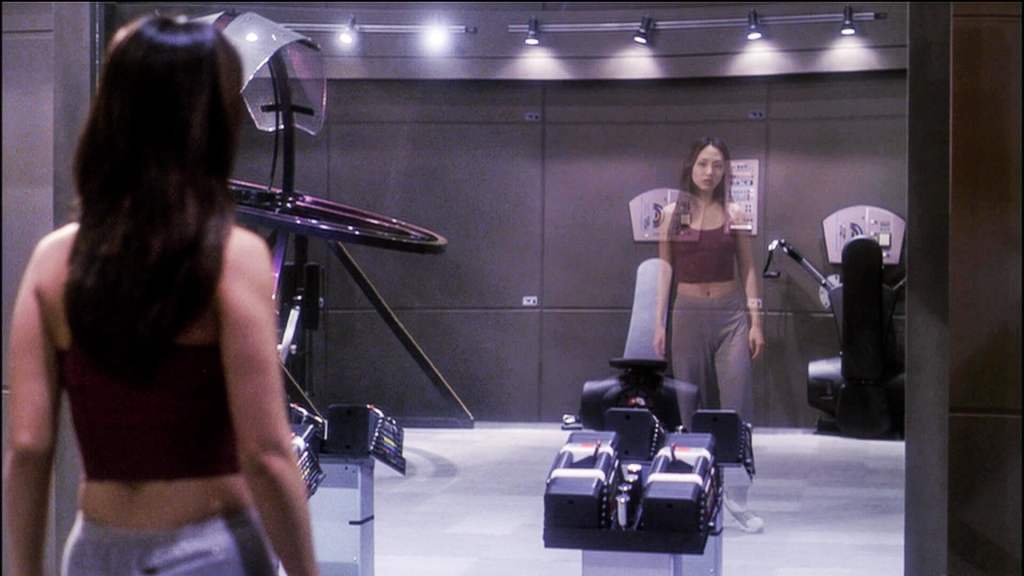
“Vanishing Point” (Season 2, Episode 10)
Recycled from: “The Next Phase,” Season 5 Episode 24 of The Next Generation
Star Trek isn’t the only franchise to deep its toe in the “out of phase” well, but The Next Generation’s “The Next Phase” is a classic of the sub-genre, in which Geordi and Ro think they’ve died and attend their own funeral before realising they are, in fact “out of phase” with everyone else and still very much alive. Enterprise’s Vanishing Point is a twist on this idea, with Hoshi’s fears surrounding transporter technology playing out as a terrifying experience in which she slowly disappears from view as a result of a transporter malfunction, only to discover none of it really happened and it was all just a paranoid delusion.
Who did it better? It almost could have gone to Enterprise, as “Vanishing Point” is genuinely creepy, not to mention being a rare opportunity to explore Hoshi’s character. But that final “it was all a dream” twist, the one that every writing teacher tells you never to use in your first writing class, lets it down, so we’ll give the win to The Next Generation for a more thoughtful reflection on life and death.
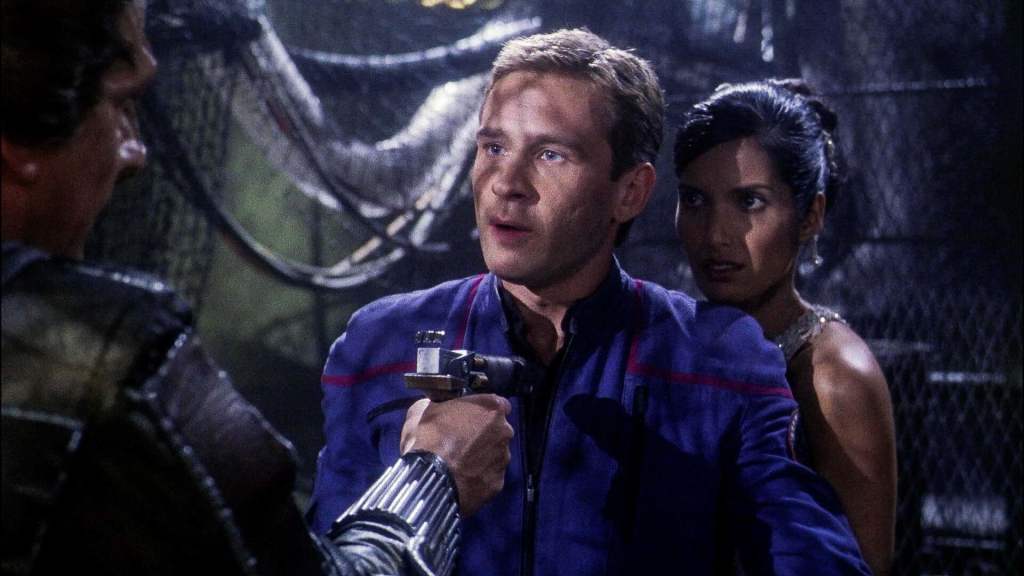
“Precious Cargo” (Season 2, Episode 11)
Recycled from: “Elaan of Troyius,” Season 3 Episode 13 of the Original Series, and “The Perfect Mate,” Season 5 Episode 21 of The Next Generation
Oh dear. Oh dear, oh dear, oh dear. How is it possible that a franchise as forward-looking as Star Trek has made this episode not once, but three times?! Basically, the story is that there is alien princess (or upper class woman) who is on her way to a political arranged marriage that borders on forced, or in Enterprise’s case, who has been kidnapped. She ends up falling for Kirk/Picard/Trip, but in the end goes back to her duty – marriage in the first two cases, ruling as First Monarch in the third. All three are epically sexist in various different ways, depending on whether they were produced in the 1960s, 1990s, or 2000s.
Who did it better? Here’s the thing – all of these episodes are bad. There are those who give “The Perfect Mate” a bit of a pass because it’s always fun to watch Patrick Stewart and Famke Janssen together, but if you want to do that, just go watch the X-Men movies. “Precious Cargo” is not a good episode of Enterprise, but it is actually not quite as bad as the other two – the “stranded on a deserted island” aspect is kind of fun, and of the three horribly sexist episodes, it may be the least sexist – at least Kaitaama is able to suggest Trip comes to visit her at the end, instead of leaving forever pretending to be bonded to someone else (Kamala) or leaving in tears while her paramour cheerfully goes back to his ship (Elaan). So, perhaps surprisingly, we’re going to give this one to Enterprise.
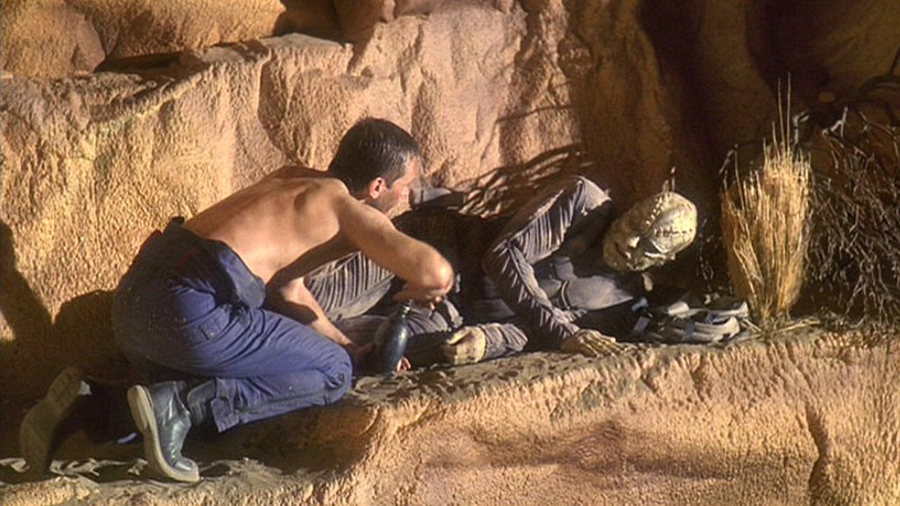
“Dawn” (Season 2, Episode 13)
Recycled from: “Darmok,” Season 5 Episode 2 of The Next Generation
Dawn does not have the best reputation online, but it’s an episode that deserves reconsideration. It’s a classic story of two mutual enemies stranded in a hostile environment, forced to work together to survive. It’s tense, it’s a nice character piece for Trip, and it works its way to an obvious but satisfying conclusion. What brings it particularly close to “Darmok” is the complication that Trip is stranded without a functioning universal translator, creating an added communication barrier (this also happened in “Voyager’s Gravity,” but there the alien fell in love with Tuvok instead of trying to kill him). However, unlike “Darmok,” there is nothing particularly unusual about the alien language – the translator simply isn’t working, and once they’re back on the Enterprise, they can understand each other perfectly. This is at the root of the episode’s poor reputation. Because “Darmok” approached the idea of an alien language in a really interesting and unusual way, this similar episode with a simple malfunctioning translator comes off poorly in comparison.
Who did it better? “Dawn” is seriously under-rated, but “Darmok” is a classic, so this one is going to have to go to The Next Generation. Shaka, when the walls fell.
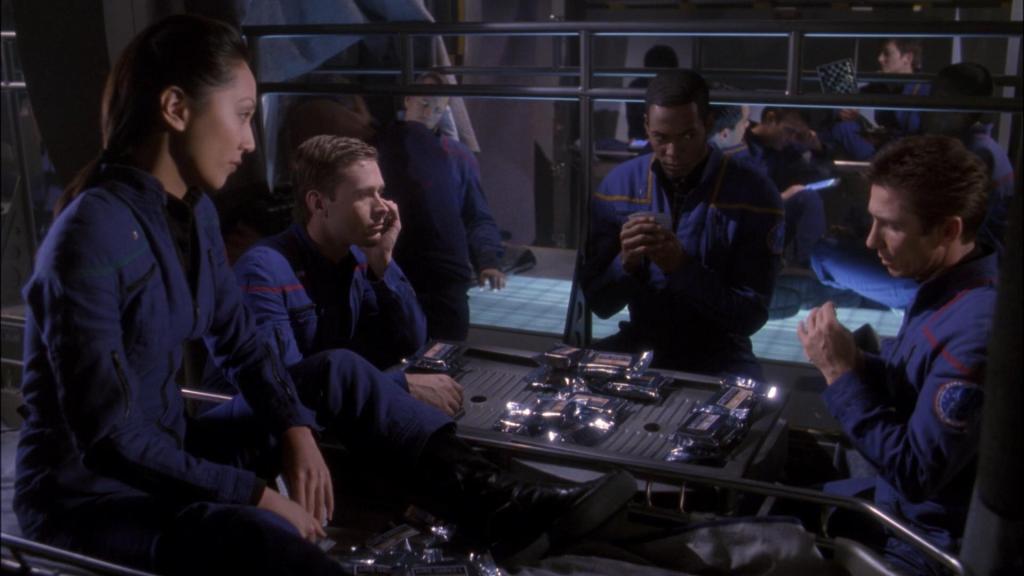
“Judgment” (Season 2, Episode 19)
Recycled from: Star Trek VI: The Undiscovered Country and “Tribunal,” Season 2 Episode 25 of Deep Space Nine
This episode isn’t so much recycling one of the best Star Trek movies as deliberately paying homage to it, building sets that recreate the Klingon court and the prison of Rura Penthe from the film as closely as possible on a TV budget and telling a similar story. Archer’s experience of an alien trial where the outcome has been decided before it begins also echoes Chief O’Brien’s experience with the Cardassians in Deep Space Nine. “Judgement” is a very good episode that calls back to the movie very effectively while also expanding the franchise’s mythology around the Klingons and Klingon culture – while it may not be entirely original, this is a good example of a creative re-use of old tropes.
Who did it better? The Undiscovered Country has a completely unfair advantage here, as it has a feature film’s budget and a runtime of nearly two hours. But life isn’t fair, and while all three are pretty good, it’s the best of the bunch.
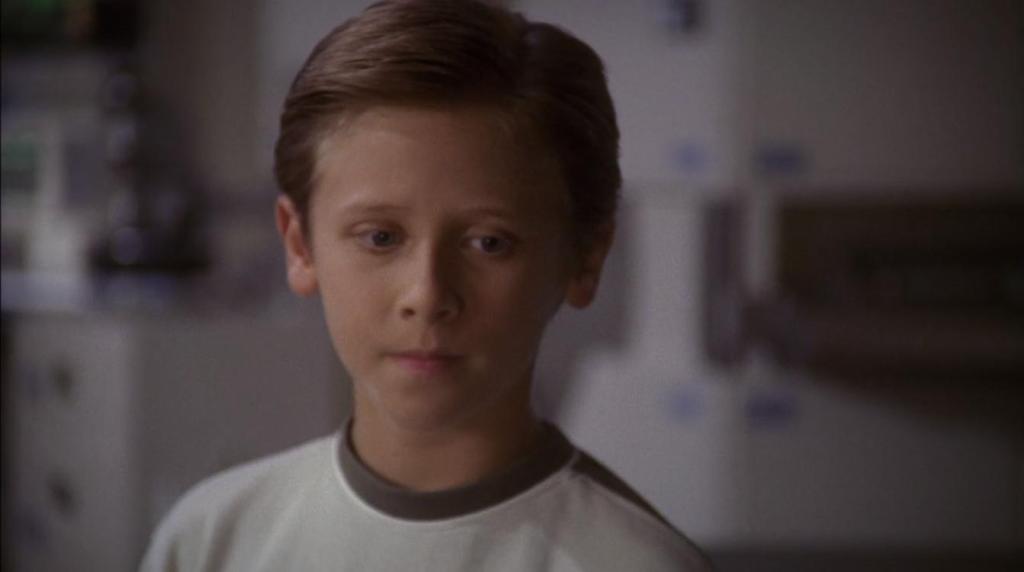
“Similitude” (Season 3, Episode 10)
Recycled from: “Tuvix,” Season 2 Episode 24 and “Drone,” Season 5 Episode 2 of Voyager
If you know nothing else about Captain Janeway, you probably know that Janeway killed Tuvix in the infamous episode of the same name, in order to restore Tuvok and Neelix after they were blended together in a transporter accident. Later, she was spared having to make another difficult choice when newborn drone One – also the result of a transporter accident – commits suicide in order to protect Voyager from the Borg. But for all the flack Janeway gets, somehow no one blames Archer and Phlox when they deliberately create a clone of Trip with a shortened lifespan to save Trip’s life, and pretty much bully the poor guy into giving up his life for Trip rather than trying to have as much life of his own as he can, which he doesn’t have much choice about anyway as he’ll die before he gets anywhere interesting. It is horrifying. Justice for Sim!
Who did it better? “Similtude” blends two rather good episodes of Voyager and the ethics of it are dodgy in the extreme. Voyager gets the win here, though whether the ultimate prize goes to “Tuvix” or “Drone” is a matter of personal opinion.
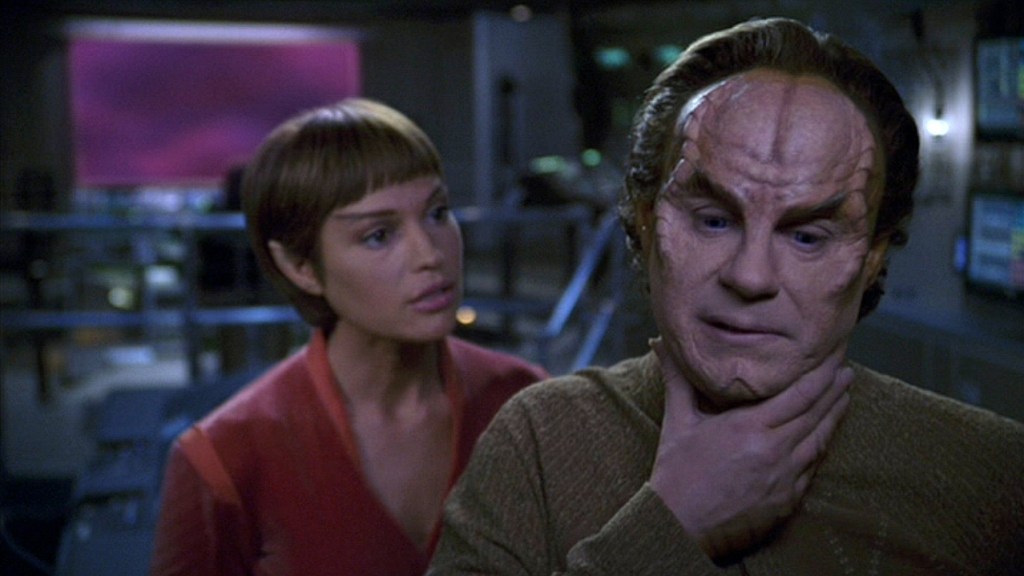
“Doctor’s Orders” (Season 3, Episode 16)
Recycled from: “One,” Season 4 Episode 25 of Voyager
The premise for this one is simple: the entire crew have to go into stasis for a while, except for one or two members who are impervious to the biological threat. Originally, this was a way to explore Seven of Nine coming to terms with her life as an individual, by isolating her almost completely. Enterprise puts Phlox in that position – while he has never been a Borg drone, Phlox is a very sociable, chatty character with three wives and a huge, complicated family, so isolation is hard on him too. Both are pretty good episodes, with a “haunted spaceship” vibe and a sense that not everything is as it seems.
Who did it better? This is a really hard one to call, because they’re both very similar and they’re both pretty good. One has Seven’s Borg background to add extra weight to the story, but on the other hand “Doctor’s Orders” has Porthos in the traditional “cute dog in a haunted house story” role. Give it to Enterprise if you like dogs, and to Voyager if you don’t.
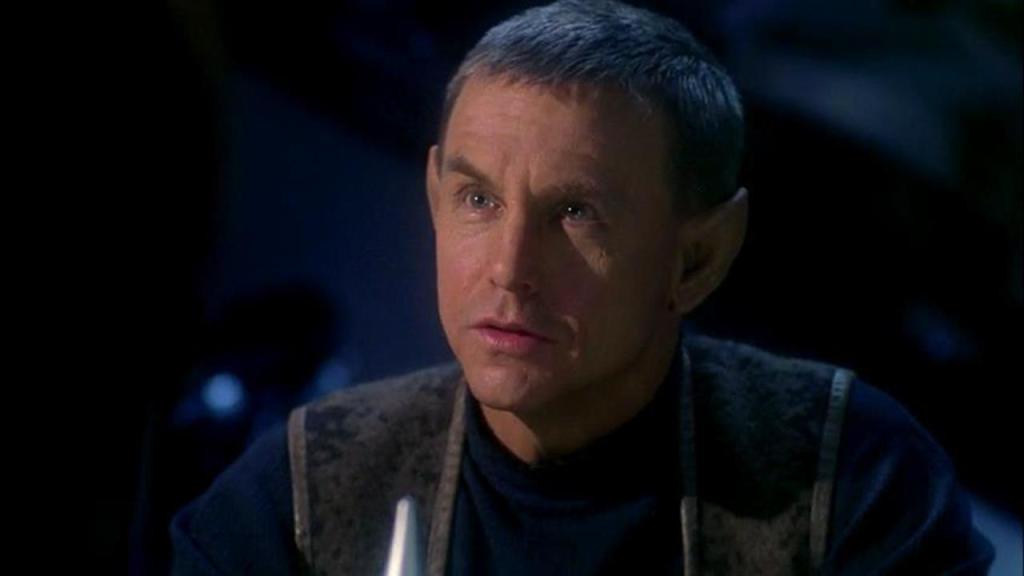
E² (Season 3, Episode 21)
Recycled from: “Children Of Time,” Season 5 Episode 22 of Deep Space Nine
In both of these episodes, some timey-wimey weirdness results in our heroes meeting their own descendants, plus one or two long-lived members of their own group. In both cases, these descendants end up dead, wiped from existence, or possibly both. Both stories focus a fair bit of attention on possible future romantic relationships among the crew, a theme Star Trek has touched on numerous times over the years, though in Enterprise there is the added confirmation for the characters that humans and Vulcans can reproduce together (though of course, the audience already knows that). Both episodes are pretty decent without being stunningly brilliant, and both are a bit of a downer.
Who did it better? Enterprise puts in a good effort, but the dark conclusion to “Children Of Time,” in which Old Odo willingly sacrifices his friends’ children and grandchildren just to save Kira, means we have to give it to Deep Space Nine.
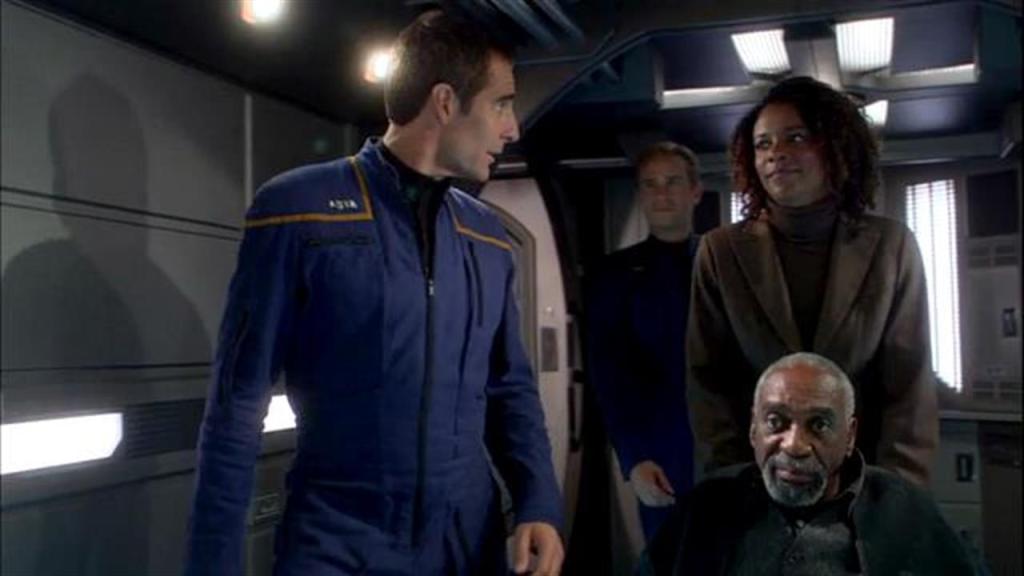
“Daedalus” (Season 4, Episode 10)
Recycled from: “Jetrel,” Season 1, Episode 15 of Voyager
These episodes have different themes, with Jetrel being inspired by the idea of a survivor from Hiroshima meeting Oppenheimer, while Daedalus, like the Greek myth, is about the relationship between a father and son. What both have in common is a guest character who wants to use the transporter system to rescue someone. The title character in “Jetrel” wants to bring back an entire planet’s worth of people – Emory Erikson in Daedalus just wants to rescue his son, and is marginally more successful, since although his son still ends up dead, he is at least rescued from a half-life in a transporter buffer.
Who did it better? Jetrel is a good episode and an especially good hour for the usually comedic character of Neelix, but the titular scientist’s plan is so audacious, it seems a bit ridiculous that he thought it could work. Erikson’s desire to save just one person and the emotional pull of the father-son relationship slightly give Enterprise the edge here, in an episode that’s a bit obvious, but nonetheless emotionally affecting. It’s also, like much of Enterprise, rather under-rated. Enterprise was an old-fashioned sort of show, and it wasn’t always the most original of offerings, but it was good, classic Star Trek, and deserves to be recognised as such.
